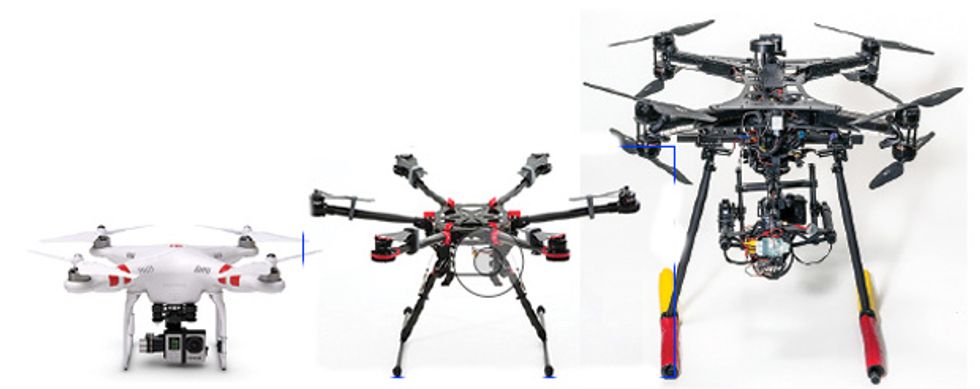The Insider’s Guide to Drone Videography
This expert guide will get you off the ground
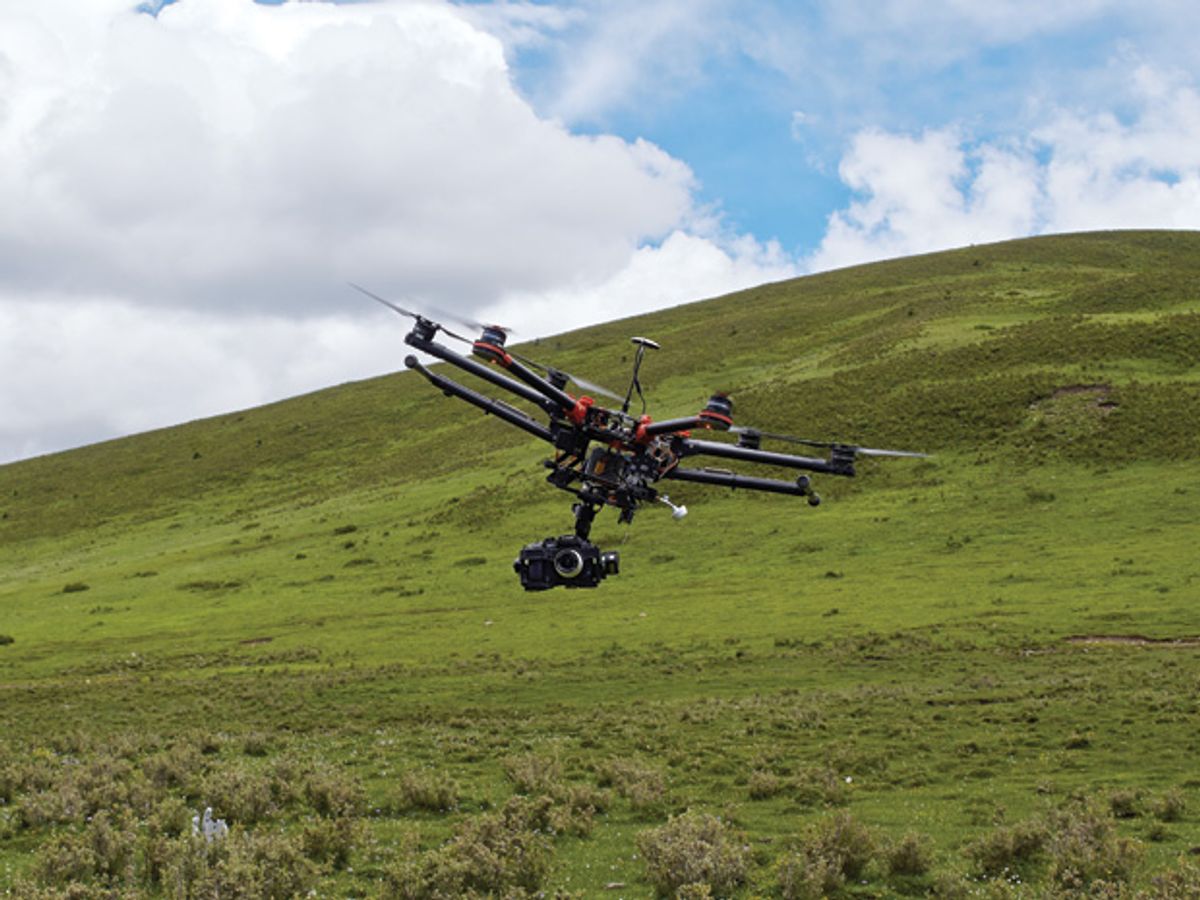
The camera swoops in on the face of a cliff rising more than 100 meters from the surrounding scrublands. Its view reveals a young woman in a fluorescent orange tank top perched halfway up a wall of ochre quartzite. The camera then cuts to just a few meters away from the rock, close enough to make out the woman’s gaze as she looks for the next handhold.
How on earth did they get those amazing shots? You might indeed be wondering that if the title of this YouTube video hadn’t given the answer away: “Rock Climbing with the DJI Phantom 2.” The Phantom 2 is a tiny electric helicopter you can buy for about US $700.
Latest Drone Shots
from Instagram
The ability to capture footage of this sort is not exactly new: For many years the film industry has taken advantage of radio-controlled (RC) helicopters to carry movie cameras to places that cranes and dollies couldn’t go. But now small multiple-motor helicopters, or multicopters, have largely supplanted the more mechanically complex single-engine model helicopters used in the past for this task.
These camera-equipped electric drones have been getting cheaper and easier to use, in large part because of the proliferation of smartphones, which led to the development of inexpensive gyroscopes and accelerometers and made it possible to mass-produce very capable yet inexpensive autopilots. Indeed, the cost of camera-equipped multicopters is now well within the means of the countless people who want to take aerial videos for a variety of purposes: journalism, wildlife observation, search-and-rescue operations, real-estate photography—or perhaps just plain fun.
But before you rush out and buy one of these systems for your own pet project, you should educate yourself about the capabilities and limitations of current technology. At least learn enough to know which features are important to your application and which are not. And above all, find out what is safe and legal to do. Here’s a guide to get you started.
Although drones have historically been associated with military operations, small remotely piloted aircraft are increasingly used for peaceful purposes. Already in Europe, green-power producers fly drones to inspect the blades of wind turbines, farmers use them to survey crops, and oil companies inspect their installations with them. One U.K. company has even used a drone of this kind for close inspection of a tower used to burn off combustible gases—even as the flames rose just meters away.
Multicopters are a type of drone with at least three independent motors and propellers, although the number of motors generally ranges between four and eight, depending on the load to be carried and how much redundancy is sought. A small onboard computer controls the distribution of power to the different motors, which is how most multicopters are steered through the air.
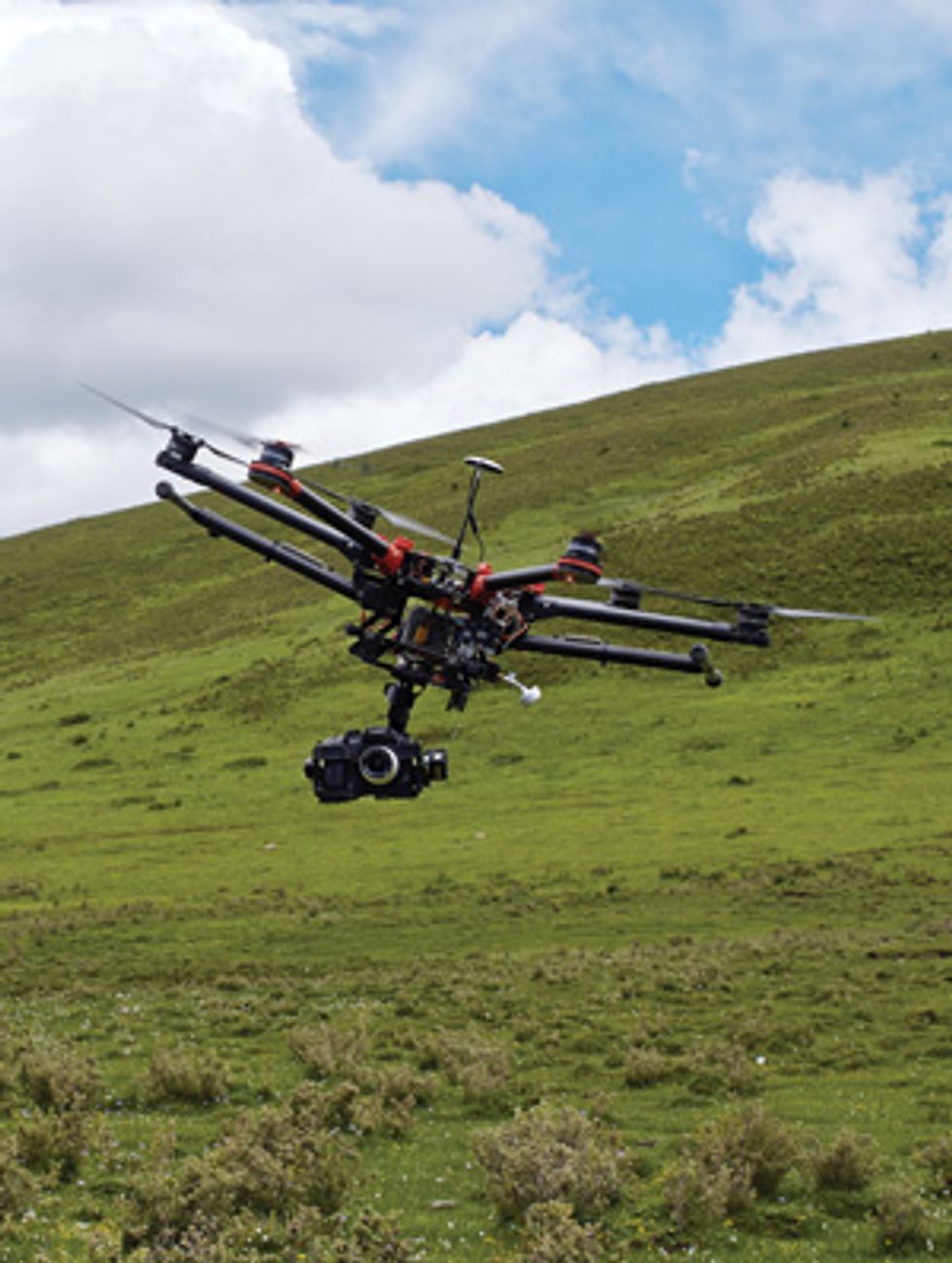
To advance, you send more power to the motors in back and less to those in front, which makes the vehicle nose down slightly, thus propelling it forward. Conversely, providing more power to the motors in front will make the vehicle pitch and move backward. And varying the power laterally causes the drone to roll to the left or right.
You can also rotate the drone about a vertical axis (yaw) by boosting power to half the props—the ones that rotate one direction—and diminishing power to those rotating in the opposite direction, always adjusting the power so that the redistribution doesn’t cause unwanted pitch or roll. The resultant yaw motion is a reaction to the change in overall angular momentum of the spinning props.
Shifting power to four or more motors in this way would be impossible to do manually, but the onboard electronics readily handle the task. Indeed, the electronics found in most systems include an inertial-measurement unit (IMU) that can stabilize the drone even in the face of changing winds, which are what makes flying a traditional RC helicopter so challenging.
To keep a traditional model helicopter hovering in the same spot requires a skilled RC pilot who must continually make adjustments. With most multicopters, though, those moment-by-moment corrections are automated. And with the help of onboard GPS receivers, barometric-pressure sensors, and flight-control systems, a multicopter can hover in the same area of the sky with ease, a capability that makes it straightforward to capture video using a camera mounted on the airframe.
What kind of camera and airframe you use will, of course, depend on your exact aims. For serious cinematography, you’ll need a multicopter that can carry the considerable weight of a pro-level camera, which probably means a multicopter with long frame arms, up to 12 motors and props, and larger batteries. But you can also get quite good results with less sophisticated cameras and a correspondingly smaller drone.
In general, to carry a Micro Four Thirds–format camera (such as the Panasonic Lumix GH4) will require a multicopter with arms that measure roughly 30 centimeters long. To lift a digital single-lens reflex (DSLR) camera like the Canon EOS 5D or 7D requires something like 45-cm arms. And if you intend to use a true cinema camera, such at the Red Epic, Arri Alexa, or Canon EOS C500, look for a really hefty multicopter with arms that measure from 80 to 110 cm.
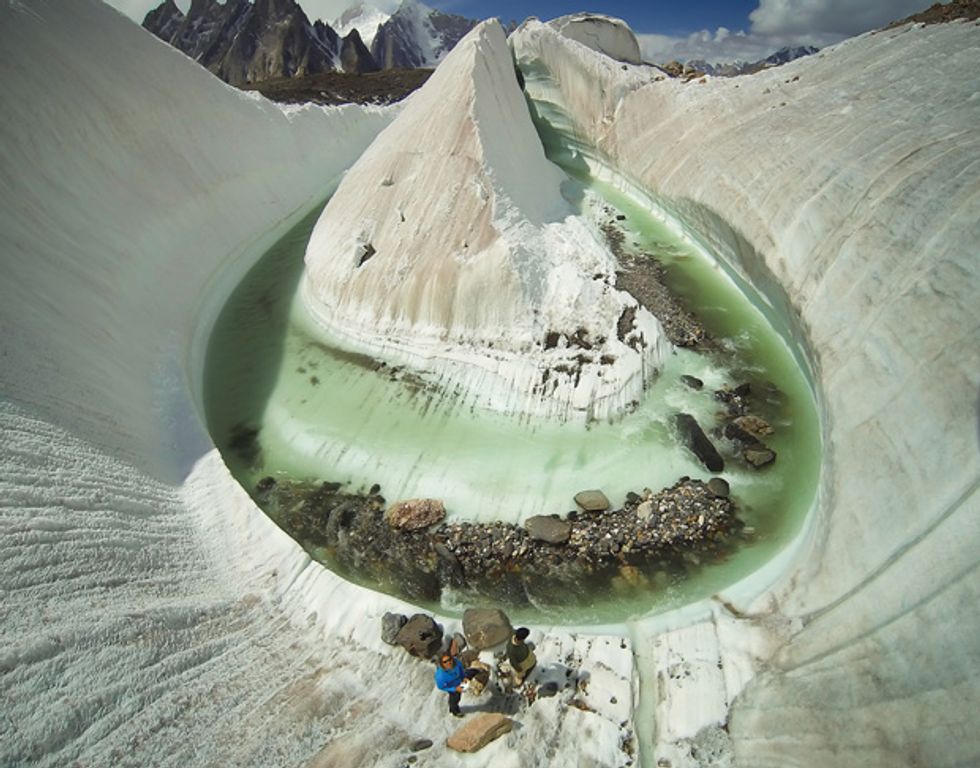
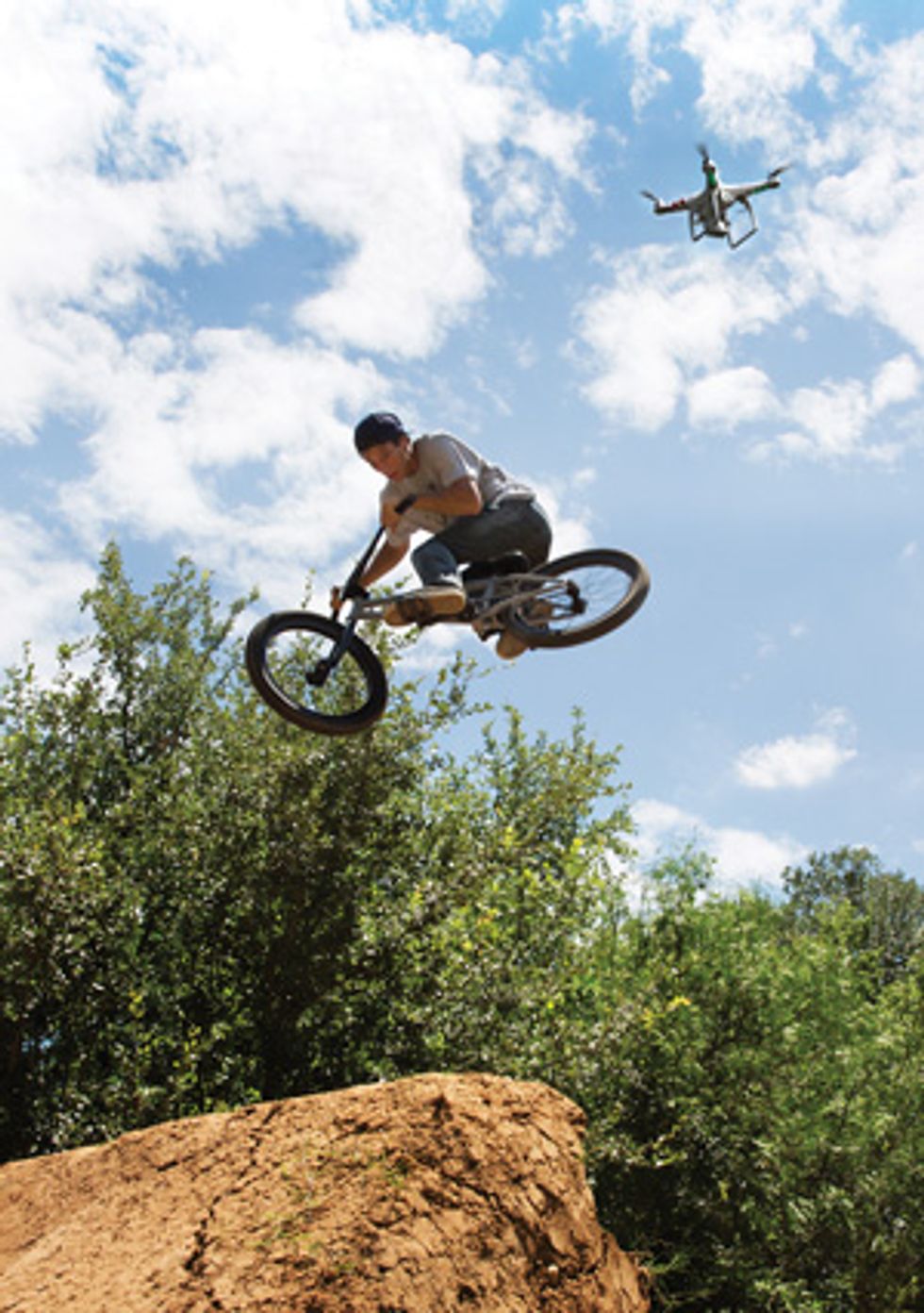
You’ll also need to think about how you are going to stabilize your camera, which will likely require an electronically controlled gimbal. There are many such gimbals on the market, most nowadays incorporating an IMU and brushless motors, which can rotate the camera smoothly, either to point it at the subject or to compensate for motions of the multicopter.
Pay attention to this component: The gimbal is usually the weakest link in the system. But if you get this right, you’ll obtain video that’s so steady it’s almost mind-bending.
Now that I’ve sketched the general outlines of what’s involved, let me offer some concrete recommendations. Many other choices are available and reasonable, of course, but you won’t go too far wrong following these leads.
Although it might appear that the first thing to decide is which camera you want to use, I’d advise starting with the gimbal instead. That’s because some of the best gimbals are designed for specific camera models.
Diaz’s Picks For Good Drone Pics
Here are three models that the author knows work well. These examples span a range of budgets and required capabilities
| DJI Phantom 2 | DJI Spreading Wings S900 | xFold Cinema X8 Basic | |
|---|---|---|---|
| Classification | Consumer | Prosumer | Professional |
| Number of motors | 4 | 6 | 8 |
| Propeller diameter (centimeters) | 23 | 38 | 41 |
| Frame-arm length (centimeters) | 18 | 36 | 24/28 |
| Battery capacity (ampere-hours) | 5.2 | 10–15 | 20–44 |
| Payload (kilograms) | up to 0.3 | up to 5 | up to 21 |
| Flight time (minutes) | 25 | 18 | 30 |
| Base cost | US $699 | $1,400 | $10,335 |
In selecting a gimbal, you’ll first need to consider whether a two-axis system is sufficient for your needs. For beginners or hobbyists, this may be perfectly adequate. But if you intend to do professional filming, a three-axis brushless gimbal is de rigueur. That’s because a two-axis system will not stabilize the pan axis during flight, and the resulting motions will show up in your videos as a disturbing “yaw wag.”
The most popular “prosumer” systems used today include the DJI Zenmuse and Freefly MoVi gimbal systems. The Zenmuse line, which includes two-axis and three-axis variants, is the best choice for stabilizing smaller cameras. A great thing about these gimbals is that they come prebalanced and tuned to handle specific models, including GoPro cameras and DSLRs from Blackmagic, Canon, Panasonic, and Sony. Pick the right camera and this gimbal will work perfectly out of the box. The MoVi gimbals, which would be needed to stabilize a heavier, cinema-quality camera, require somewhat more setup.
Drone-video hobbyists generally use small cameras, like one of the GoPro models or the Sony RX100. This allows them to use smaller, cheaper gimbals (such as the Zenmuse H4-3D line) and airframes (like DJI’s extraordinarily popular Phantom 2 quadcopter). The disadvantage is that these cameras don’t offer complete manual control of aperture, ISO, and shutter speed. Also, the GoPro’s fixed wide-angle lens produces an unpleasant amount of fish-eye distortion. So more serious drone videographers prefer to use DSLRs or even larger cinema-quality cameras.
Most people use fixed focal-length lenses and leave the focus set at infinity with as large a depth of field as possible. But it is possible to put together a system that allows you to adjust zoom and even focus remotely. Of course, the more magnification you use, the more prone your video system will be to the effects of vibration.
Having chosen a camera and gimbal combination, you’ll be set to go shopping for a multicopter. For the GoPro and Zenmuse H4-3D, the DJI Phantom 2 is a natural—and much nicer than the earlier-designed Phantom 1. The newer version has a better battery, providing up to 25 minutes of flight time (almost twice that of the original Phantom), and it’s also a lot easier to swap in and out. The Phantom 2’s props are larger and provide greater lift and efficiency compared with those of its predecessor. The flight controller has been updated and now interfaces with a Mac. The Phantom 2 also comes prewired for a Zenmuse gimbal. These improvements in flight time, user friendliness, and Mac support all make it worth getting the second version of this very capable little multicopter.
Another good option that should give similar if not better performance is the newly released Phantom 3, which comes with a gimbal and video camera and, given DJI’s reputation, ought to fly pretty well straight away.
For those who want to put together a system that can carry a DSLR, I’d suggest another of DJI’s products: the Spreading Wings S900, which is suitable for advanced amateurs or professionals. This hexacopter ($3,400 for the high-end configuration) is straightforward to assemble and is very portable when broken down.
If you’re looking to have all possible shooting options and want a top-of-the-line product, you could purchase one of the xFold line from my own company, Denver-based Xfly Systems. This high-end multicopter is superb for shooting video for HDTV or even footage for feature films. It’ll run you more than $10,000, though, for a suitable model. And once you add an RC transmitter, gimbal, video and data telemetry, and a battery charger, your bill will approach double that. Still, it will be considerably less expensive than the kind of cinema-quality camera you’re likely be flying with it.
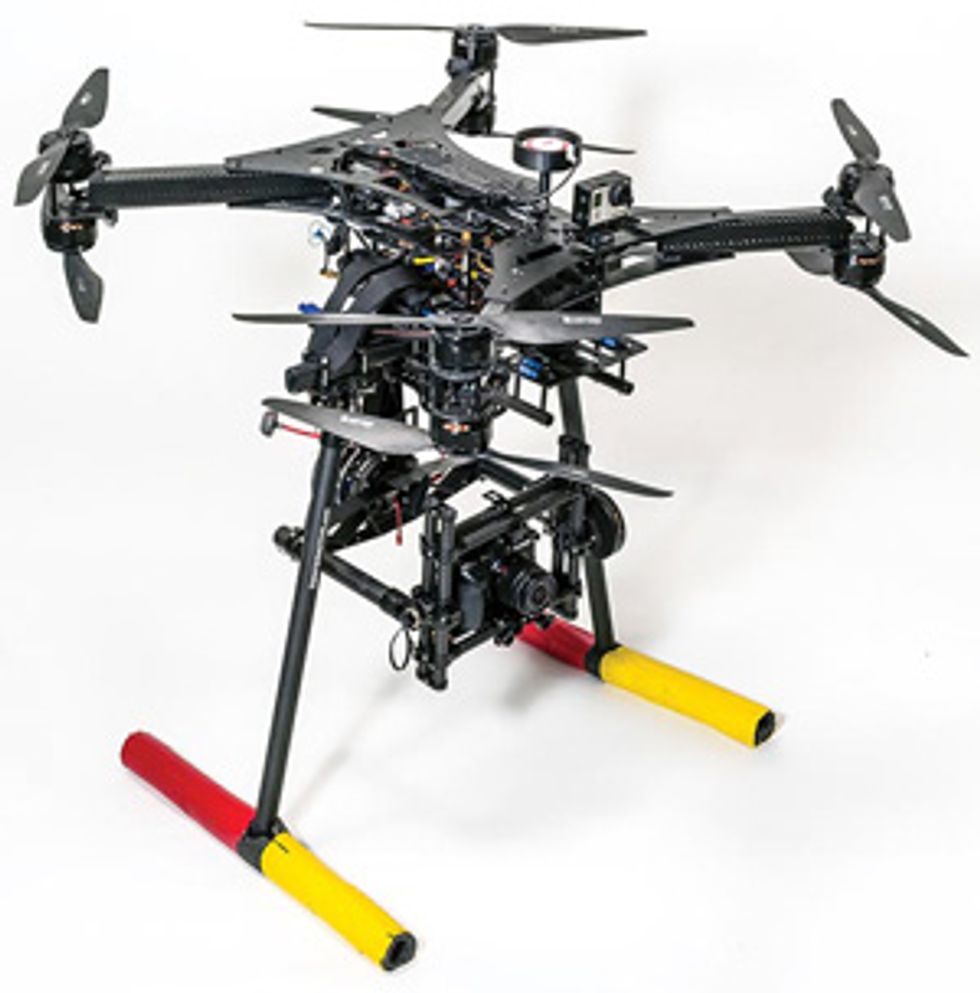
Having the necessary gear is a start, but you’ll also need to develop the necessary skills. Getting good video with a multicopter demands attention to lighting conditions, framing, composition, and using the correct camera settings—just as any videography would. But there are some special considerations when you use a drone to gather footage.
First and foremost, the craft itself needs to be stable and properly set up so it flies well. In particular, the feedback-gain settings of the copter’s flight-control system must be tuned so that the craft reacts promptly enough to counter gusts of wind and other outside influences without becoming too twitchy. It’s also important that the copter not respond too quickly to the operator’s control inputs. A little sluggishness will produce smoother flights, which translates into smoother footage.
The best way to set the proper gains is to have them remotely adjustable using a spare channel on the radio used to control the copter. Every time you fly, then, you can adjust the gains to match environmental conditions. You might also need to retune the flight controller’s gain settings if you switch cameras or change prop size. Do this diligently. Failing to get your gains set correctly could well result in shaky footage no matter how well your gimbal works.
Another requirement for obtaining good results is carefully balancing the props, which otherwise could cause vibrations in the video. Drone videographers call this all-too-common effect “jello.”
Of course, getting the perfect shot will also hinge on your ability as a drone pilot to fly smoothly, accurately, and safely around your subject. Ideally, a second operator will use video telemetry sent from the camera to keep the subject properly framed, panning and tilting the camera as needed by remote control while you concentrate on flying.
Having two people working together in this way is the best strategy by far. Indeed, many experienced drone videographers believe having a separate camera operator is of paramount importance to flying safely and is really the only way to get consistently good results. Others, though, manage to take impressive footage on their own. They generally leave the camera aimed toward the nose of the craft, panning the view by turning the whole copter.
After reading this guide and doing some research online, you might be eager to take the plunge and purchase a multicopter and associated gear. But if you live in the United States, don’t hang out your aerial-videographer shingle just yet. Commercial drones, unlike those flown only as a hobby, are still not allowed in the United States, except in limited circumstances. The U.S. Federal Aviation Administration has, however, recently proposed rules for commercial drones weighing less than 25 kilograms (55 pounds). Best guesses are that these rules, or something like them, will go into effect within the next two or three years.
In the meantime, you could go ahead and familiarize yourself with the basics of piloting multicopters by flying them as a hobby. Many forward-thinking aerial photographers are learning to do that now. You could do it on your own or seek more formal tutoring. The Unmanned Vehicle University in Phoenix, where I am a senior instructor, provides one source of expert help. Companies such as Stampede Presentation Products, in Amherst, N.Y., and my own employer, Xfly Systems, offer similar services as well. The Drone Media Group, which I helped found, also offers workshops and training for budding multicopter videographers.
Drone-pilot training, wherever you get it, will no doubt include ample instruction about how to operate multicopters safely. If you’re teaching yourself, pay considerable attention to the dangers involved in lofting something high into the air that can weigh several kilograms and has a bunch of rather sharp blades whirling around. A little common sense goes a long way.
Whether or not you end up buying and flying one of these new camera platforms, expect to see more and more stunning aerial sequences in the movies and on television as professional videographers embrace all the things that multicopters can do.
This article originally appeared in print as “Lights, Drone…Action.”
About the Author
T.J. Diaz, had long been consulting in IT software for a living and flying radio-controlled helicopters on the side as a hobby. Then in 2008, Canon introduced digital single-lens reflex cameras that made it possible to obtain cinema-quality video on a modest budget. “I just connected the dots,” says Diaz, who immediately went to work mounting such cameras on his helicopters and soon added gyro-stabilized gimbals to dampen their motions in the air. “Once I saw the video, I knew we were onto something big." Diaz now works entirely with drones, as an instructor with the Phoenix-based Unmanned Vehicle University and also designing equipment for drone cinematography through his own company, Denver-based Xfly Systems.
